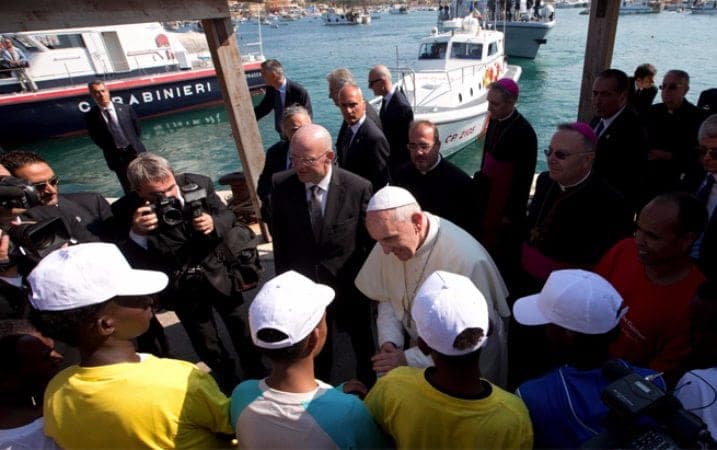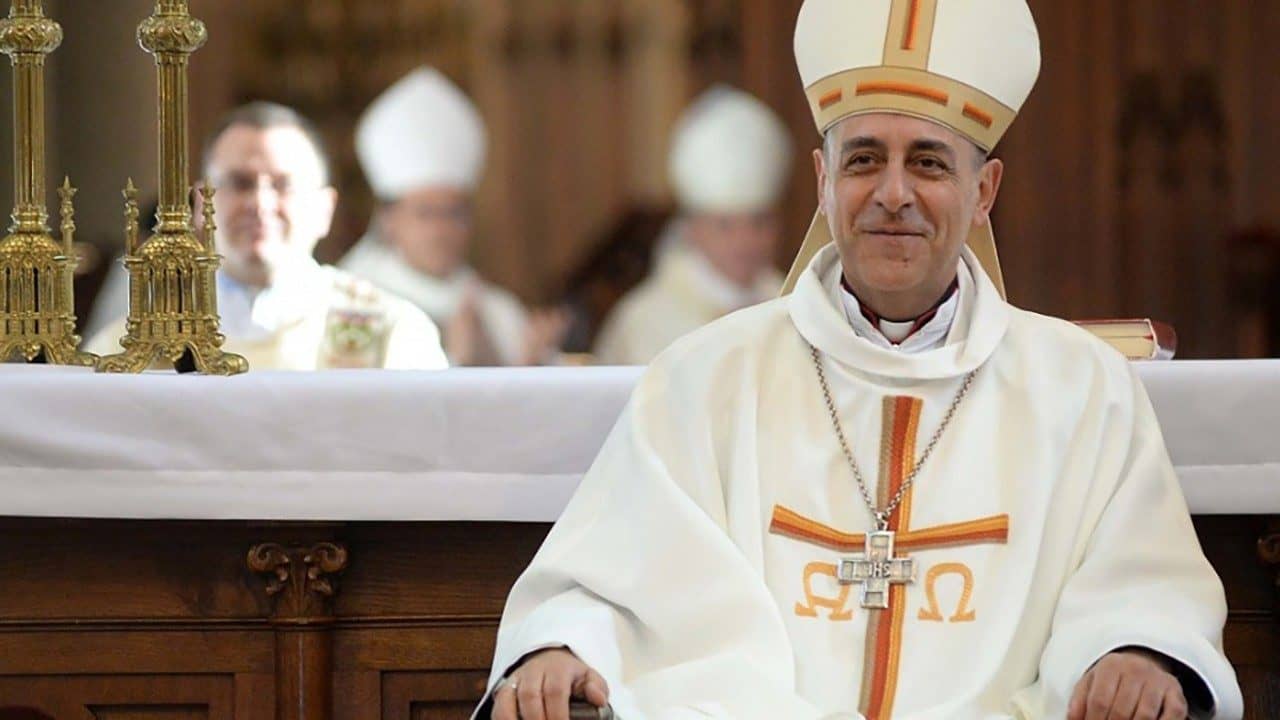ROME – Shortly after Pope Francis was elected in March 2013, he declared his wish to preside over a “poor church for the poor.” While that was a statement of intent, his first real chance to make it operational came three months later when he visited the tiny Italian island of Lampedusa off the coast of Sicily, marking his first trip outside Rome.
Today, the pontiff celebrates a special Mass for migrants in St. Peter’s Basilica in commemoration of that brief but incredibly symbolic journey six years ago.
To most Americans, the name “Lampedusa” probably doesn’t mean much. Yet for Europeans, and especially Italians, it’s become a shorthand way of referring to the migrant and refugee crisis that’s bedeviled the Old Continent since 2015, when a record 1.8 million people crossed the borders of the European Union without legal documentation.
Geographically speaking, Lampedusa, with a total population of around 5,000, is the Key West of Italy, the southernmost point of the country located closer to Tunisia than to Sicily, Malta, or anywhere in Europe.
At various points in its history, Lampedusa has been controlled by the Roman Empire, the Kingdom of Sicily, the Knights Hospitaller, the Barbary Pirates, the Greeks and the British, but since 1843 it’s been part of Sicily and therefore of Italy through the country’s various permutations.
As a global tourist destination, Lampedusa features white sand, crystal-clear blue water, and beaches that are routinely voted among the best in the world.
Yet none of that is why “Lampedusa” has become a household word in Europe. Instead, it’s because the island is the primary point of arrival for tens of thousands of desperate and impoverished people, mostly Africans and Middle Easterners, seeking to enter Europe from the coast of Libya.
Italians are a famously hospitable people, and in the beginning, the citizens of Lampedusa were happy to do their part in welcoming the masses washing up on their shores. Former Mayor Giusepinna Nicolini won the UNESCO Peace Prize for her “boundless humanity and unwavering commitment” in managing the refugee crisis, and on her watch the United Nations High Commission for Refugees touted the “Lampedusa model” as an exemplar. In 2016, she was feted by U.S. President Barack Obama at a White House Dinner.
Despite all that, in local elections two years ago, in July 2017 Nicolini was trounced, coming in third with just 908 votes. The candidate who won, Salvatore Martello (in Italian, his last name means “hammer”), told reporters that Nicolini had won international applause but neglected her actual constituents.
In the meantime, a young Italian politician named Matteo Salvini had taken control of a right-wing party named the “Northern League,” whose aim once upon a time was to engineer the secession of northern Italy from the rest of the country. Salvini, at the age of 40, became the party’s Federal Secretary in 2013, and steered it towards the issue he had intuited would drive Italian politics in the future: Immigration.
Salvini and the League prevailed in national elections in 2018, and today, as Deputy Prime Minister and Italy’s de facto head of state, he’s steered a course progressively more hostile to migrants and refugees, forging a European populist alliance on that basis.
Recently, German humanitarian and sea captain Carola Rackete was arrested after she steered her ship, the Sea-Watch 3, into the port of Lampedusa in order to save the 42 illegal immigrants on board. Now released from custody, she faces the possibility of criminal charges and a $56,000 fine.
When Francis visited Lampedusa six years ago, he laid a wreath in the sea to commemorate the roughly 20,000 people believed to have died at that point attempting to make the crossing over the Mediterranean in often overcrowded, rickety and unsafe boats. Explaining his choice to go, he said that TV news reports of the people washing up there had been like a “thorn in the heart.”
“We have become used to other people’s suffering, it doesn’t concern us, it doesn’t interest us, it’s none of our business!” he said during his homily from an altar built from an old fishing boat painted in Italy’s red, green and white colors.
“We pray for a heart which will embrace immigrants,” he said via his Twitter account following the Mass. “God will judge us upon how we have treated the most needy.”
Since that visit six years ago, the political and cultural winds seem to have turned against the pontiff. Not only Italy but also Hungary and Poland are governed by anti-immigrant populists, while Marine Le Pen’s National Party in France finished in first place in recent European elections.
All of that means Francis’s Mass today may actually be more consequential than his actual visit to Lampedusa six years ago.
Back then, the pontiff was addressing a Europe still inclined to compassion and what he’s described as a “culture of encounter.” Today that’s no longer the case, with Europe trending towards closed borders and ports, and a generalized sense of “compassion fatigue.”
Other than Rome, Lampedusa may well be the Italian location Francis thinks about the most. Today’s Mass may provide some indication of the pontiff’s chances of convincing other Italians, and Europeans, to think about it the same way he does.














